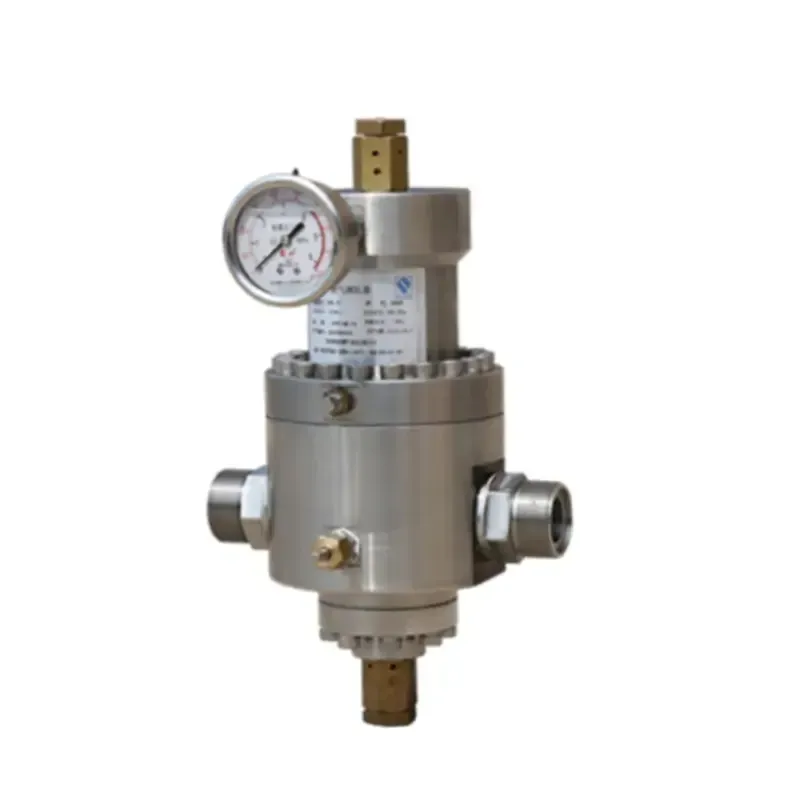
Nov . 09, 2024 09:46
Back to list
Natural Gas Pressure Reduction Station Operations and Safety Measures
Natural Gas Pressure Reduction Stations An Overview
Natural gas has become one of the primary sources of energy worldwide, fueling industries, heating homes, and generating electricity. As the demand for this clean-burning fuel continues to rise, the infrastructure to transport and utilize it efficiently is of paramount importance. One critical component of this infrastructure is the Natural Gas Pressure Reduction Station (PRDS). This article explores the function, significance, and operational aspects of PRDS in the natural gas supply chain.
Understanding Pressure Reduction Stations
A Natural Gas Pressure Reduction Station serves a crucial role in the distribution of natural gas from high-pressure transmission lines to lower-pressure distribution networks. High-pressure pipelines, typically transporting gas over long distances, maintain pressure levels that ensure efficient gas flow. However, this pressure is often too high for local distribution systems, which operate more safely and efficiently at lower pressures.
The PRDS functions as a gatekeeper, reducing the pressure of the gas to a level suitable for residential and commercial use. The pressure reduction process involves several key components, including regulators, filters, and safety devices, all working together to ensure seamless operations and safety.
Key Components and Functions
1. Regulators At the heart of any PRDS are pressure regulators. These devices automatically adjust the flow of gas to maintain a consistent output pressure. If the pressure exceeds predetermined levels, the regulators respond by throttling the flow, ensuring that end-users receive a steady supply.
.
3. Safety Devices Safety is a prime concern in natural gas operations. PRDS are equipped with various safety devices, including pressure relief valves and emergency shut-off systems. These devices are designed to prevent overpressure scenarios, protecting both the infrastructure and surrounding communities.
محطة تخفيض ضغط الغاز الطبيعي

4. Monitoring and Control Systems Advanced monitoring systems continuously track the pressure, temperature, and flow of gas through the PRDS. Operators can remotely control these stations and respond quickly to any irregularities, ensuring the system's integrity and safety.
Importance of Pressure Reduction Stations
The importance of PRDS extends beyond mere pressure management. These stations contribute to the overall safety and reliability of the natural gas supply chain. By regulating pressure, they help prevent incidents such as pipeline ruptures or leaks, which can lead to hazardous situations.
Moreover, PRDS enable the efficient allocation of natural gas resources. In high-demand situations, such as during extreme weather events, pressure reduction stations can modulate gas delivery to ensure that critical facilities, like hospitals and emergency services, maintain access to energy.
Environmental Considerations
In addition to their operational functions, pressure reduction stations play a role in environmental management. By facilitating the efficient distribution of natural gas, which burns cleaner than alternative fuels like coal and oil, PRDS contribute to reducing greenhouse gas emissions. Furthermore, advanced technologies are being integrated into PRDS to monitor and minimize methane emissions, a potent greenhouse gas that can escape during natural gas operations.
Future Developments
As the energy landscape evolves, so too will the technology and methodologies employed in pressure reduction stations. Innovations such as smart grids, predictive maintenance, and renewable energy integration are on the horizon. These developments aim to enhance the efficiency, safety, and environmental performance of natural gas distribution systems.
In conclusion, Natural Gas Pressure Reduction Stations are vital components of the natural gas supply chain, ensuring safe and efficient distribution from high-pressure pipelines to end-users. With their sophisticated technology and commitment to safety and environmental stewardship, PRDS will continue to play a significant role in meeting the energy demands of the future while supporting a sustainable energy transition.
Latest news
-
Safety Valve Spring-Loaded Design Overpressure ProtectionNewsJul.25,2025
-
Precision Voltage Regulator AC5 Accuracy Grade PerformanceNewsJul.25,2025
-
Natural Gas Pressure Regulating Skid Industrial Pipeline ApplicationsNewsJul.25,2025
-
Natural Gas Filter Stainless Steel Mesh Element DesignNewsJul.25,2025
-
Gas Pressure Regulator Valve Direct-Acting Spring-Loaded DesignNewsJul.25,2025
-
Decompression Equipment Multi-Stage Heat Exchange System DesignNewsJul.25,2025

